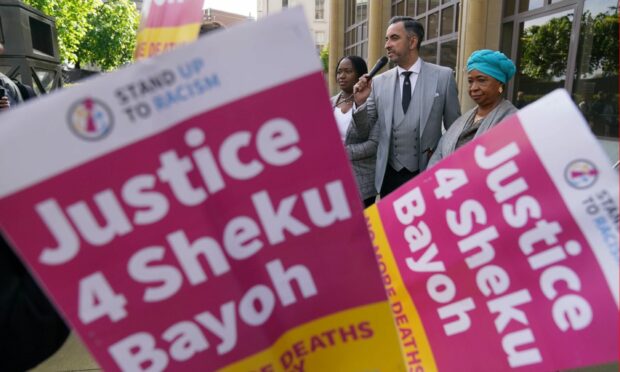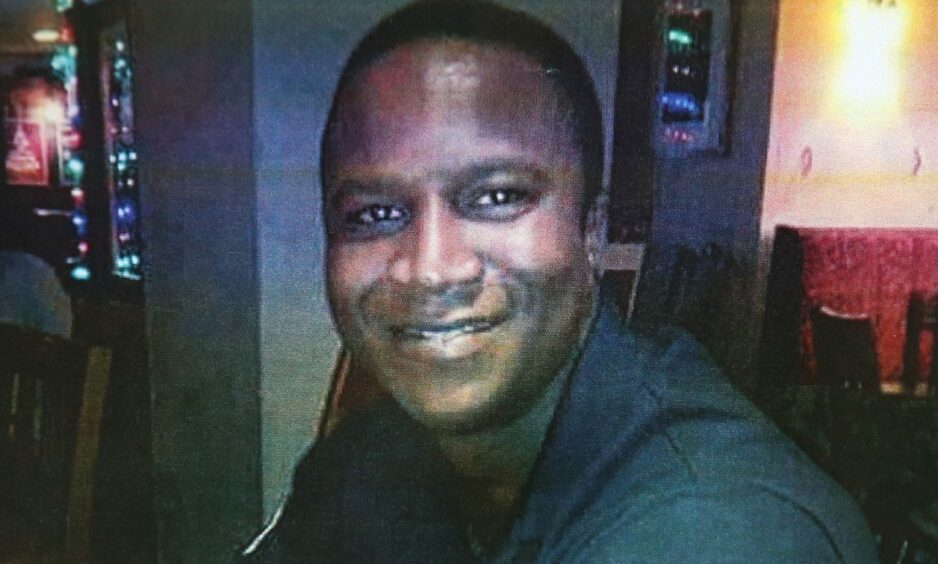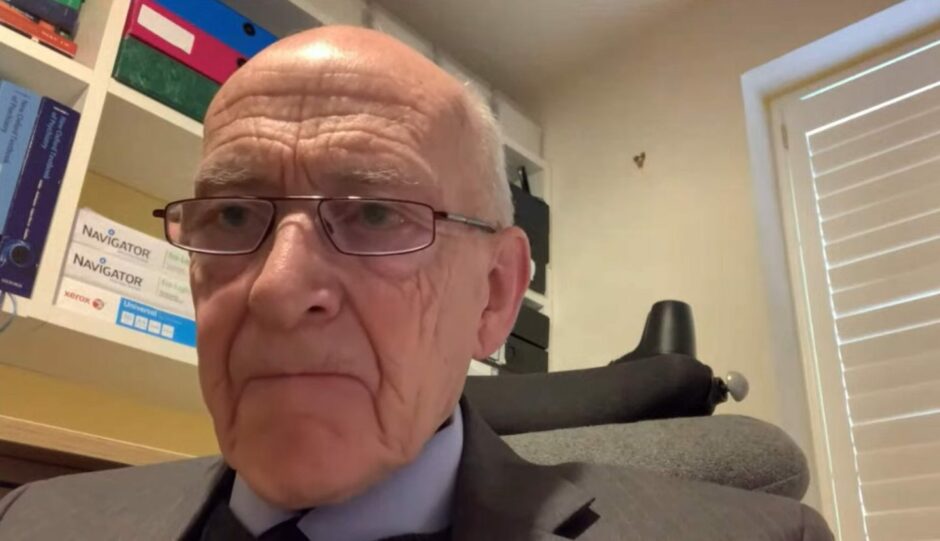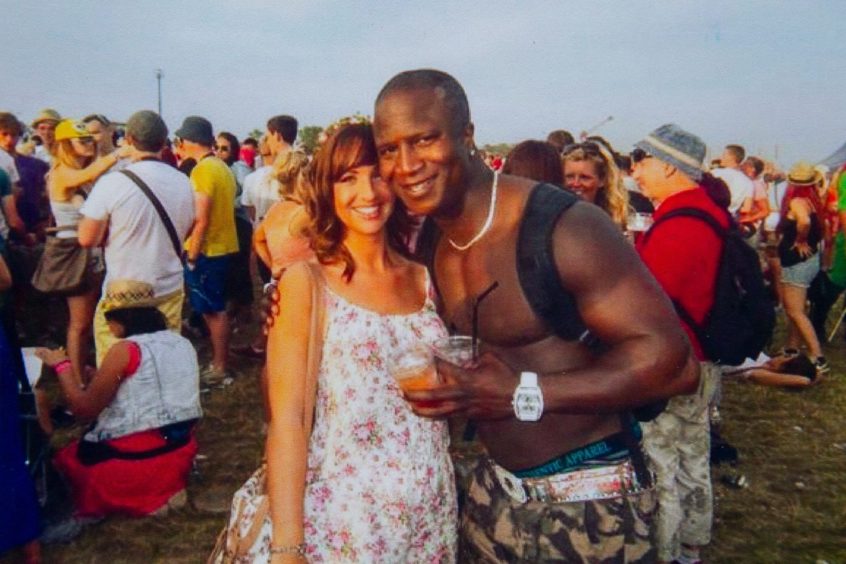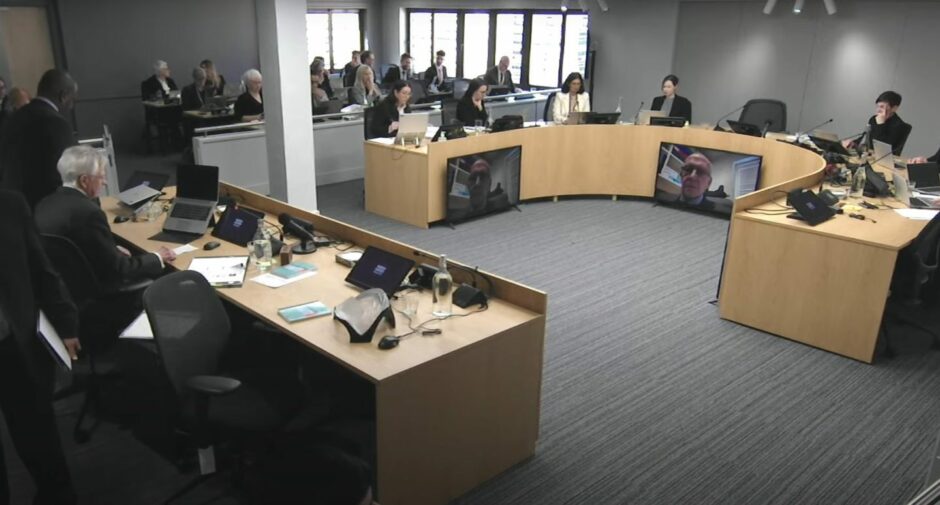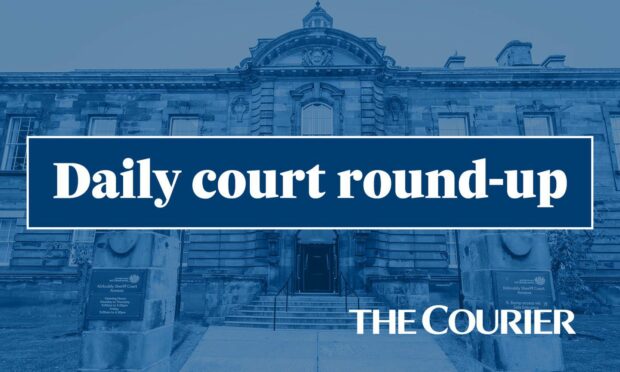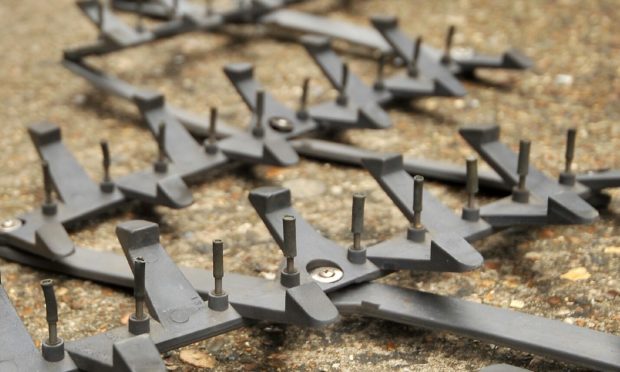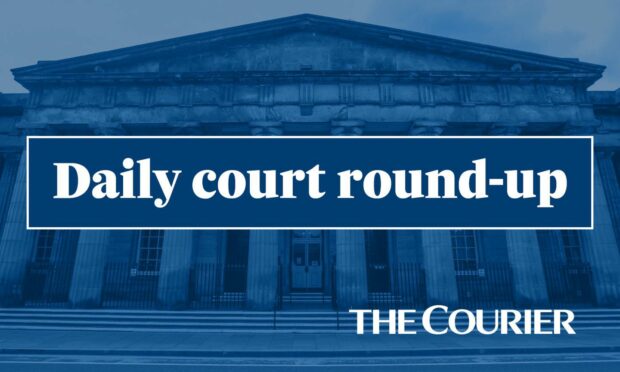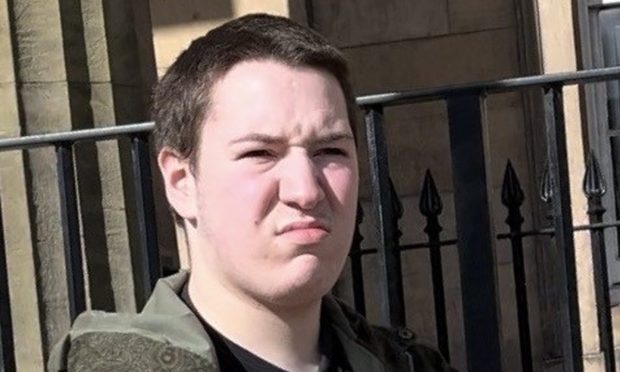The rapid change in Sheku Bayoh’s mental state and behaviour before his death was consistent with someone under “psychostimulant intoxication”.
An expert witness told the inquiry into his death one of the drugs found in Mr Bayoh’s system can cause paranoia in someone susceptible to it.
Maurice Lipsedge, a consultant psychiatrist, said in some people the reaction can be “extreme” and that is what he thinks happened to Mr Bayoh.
The trainee gas engineer died after he was restrained by around six police officers who were called to Hayfield Road in Kirkcaldy, on May 3 2015 after reports of him acting erratically.
The inquiry is investigating the circumstances of the 31-year-old’s death and whether race was a factor.
It previously heard from the pathologist who examined Mr Bayoh after he died, who confirmed it was a “sudden death in a man intoxicated by MDMA and alpha-PVP whilst being restrained“.
‘Extreme’ paranoid reaction
Angela Grahame KC, lead counsel to the inquiry, asked Dr Lipsedge about the impact alpha-PVP can have on someone.
He described it as a “very powerful stimulant” and “like a very, very potent form of amphetamine”.
“We know that amphetamine has the potential to cause extreme paranoia fairly quickly.
“It doesn’t do that to everybody but in a person who happens to be susceptible then there can be a paranoid reaction which can be extreme and that’s what I think happened to Mr Bayoh.”
He was asked how someone who had taken the drug might appear and what their state of mind might be.
He replied: “The adverse psychiatric effect is suspicion moving into paranoia, intense fear that other people want to harm you and in Mr Bayoh’s case it’s clear that there was a progression from suspecting that his friends were having a conversation about another person who wasn’t present.
“Mr Bayoh thought that they were talking about him and then the situation escalated so that he began to think his friends were actually against him.”
Previous police experience
Dr Lipsedge was asked what state of mind Mr Bayoh might have been in when police arrived at the scene.
He said that if a person is in a paranoid state, imagining enemies and that people want to harm him, they are “highly suspicious” of others, including people in authority.
The witness said: “I don’t know Mr Bayoh’s previous experience with the police and he might not have had any previous experience but sometimes the appearance of somebody in a uniform exacerbates a paranoid state.”
He also mentioned ethnicity, although stressing this would be speculation, and said: “It is possible that Mr Bayoh had experienced discrimination and that might have been a factor when he was approached by white police officers.”
He told the inquiry: “Even in the absence of paranoia one comes across people who, this is well documented in the United States, people who are not psychologically disturbed but who are approached by police, I’m talking about black people now, and who then are so terrified of the police that a life or death struggle ensues and that’s to do with a previous experience of racism.”
Ms Grahame said Collette Bell, Mr Bayoh’s partner, had told the inquiry she had conversations with him and he “used to always say to me about racism and the police”, and added: “Do you know as a black man when you’re up against the police, it doesn’t matter if you have done right or you have done wrong, the only way you are getting out of a confrontation with the police is if you run.
“There is no way out as a black man when you’re coming up against the police.”
Dr Lipsedge agreed with Ms Grahame that it was indicative of Mr Bayoh having previous bad experiences with the police.
Cardiac risk from drugs
Dr Lipsedge, 86, who gave evidence remotely, worked as a consultant psychiatrist in the NHS until his retirement form the health service but he still works in that field.
The inquiry also heard about a retrospective psychiatric diagnosis Dr Lipsedge made in relation to Mr Bayoh in a report he submitted to the Police Investigations & Review Commissioner (Pirc).
Ms Grahame said: “You talked about how the rapid changes in Mr Bayoh’s mental state and behaviour from apparent normality were consistent with psychostimulant intoxication,” to which Dr Lipsedge replied: “That’s correct.”
Dr Lipsedge said psycho stimulants are drugs like amphetamines and cocaine and the group of drugs called cathinones which have an “excitatory” effect on the brain and nervous system.
However, he said there can also be the risk of cardiac arrest if someone is restrained having taken such drugs.
He told the inquiry: “There is a release of dopamine, which is the pleasure-seeking component, there is also a release of adrenaline which can very commonly raise the heart rate, raise blood pressure and make the heart vulnerable.
“If the heart is deprived of oxygen, which can happen during restraint, there is a risk of cardiac arrest due to a disturbance of the rhythm of the heart.”
The inquiry, taking place before Lord Bracadale in Edinburgh, continues.
